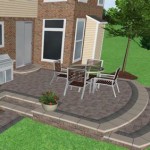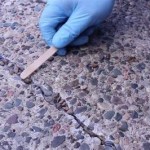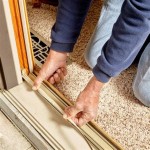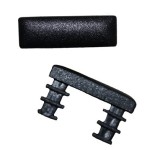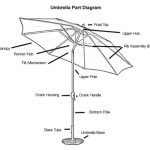Can You Dye Patio Cushions? A Comprehensive Guide
The question of whether you can dye patio cushions is a common one for homeowners seeking to refresh their outdoor spaces without incurring the cost of purchasing entirely new cushions. The answer, while not a simple yes or no, leans towards a cautious “potentially, with caveats.” The success of dyeing patio cushions depends heavily on the fabric composition, the type of dye used, and the application method. This article will delve into the intricacies of dyeing patio cushions, exploring the factors that contribute to successful color transformation and the potential pitfalls to avoid.
Patio cushions are typically exposed to a variety of environmental stressors, including sunlight, moisture, and temperature fluctuations. Consequently, manufacturers often utilize synthetic fibers that are resistant to fading, mildew, and water damage. These very properties that make them suitable for outdoor use also make them more resistant to accepting dye. Natural fibers, on the other hand, tend to absorb dye more readily, but may not be as durable or weather-resistant.
Understanding the fiber content of your patio cushions is the first critical step in determining whether dyeing is a viable option. Many cushions are made from blends of natural and synthetic fibers, which can further complicate the dyeing process. A careful assessment of the manufacturer’s label, if available, is essential. If the label is missing or illegible, a burn test, performed carefully and safely, can provide clues about the fabric composition. A small, inconspicuous piece of the fabric can be burned, and the characteristics of the burn (e.g., melting, shrinking, ash residue) can indicate whether the fabric is predominantly natural or synthetic.
Understanding Fabric Composition
The most common fabrics used in patio cushions include acrylic, polyester, olefin (polypropylene), and cotton. Each of these fabrics reacts differently to various dyes. Acrylic, for example, is relatively receptive to certain types of dyes, particularly those designed for synthetic fibers. Polyester, known for its durability and resistance to fading, presents a greater challenge. Olefin, prized for its water resistance and stain resistance, is often difficult to dye successfully due to its inherent chemical properties. Cotton, a natural fiber, is generally easier to dye than synthetic materials, but may not be as resilient to outdoor elements unless treated with a weather-resistant coating.
When dealing with cushions made from a blend of fibers, the dyeing process becomes even more complex. The dye may adhere preferentially to one fiber over another, resulting in an uneven or mottled appearance. Furthermore, the presence of a significant percentage of synthetic fibers can inhibit the dye's ability to penetrate the natural fibers effectively. In such cases, a specialized dye designed for mixed fiber fabrics may be necessary, but even then, the results can be unpredictable.
Before committing to dyeing an entire set of patio cushions, it is highly recommended to perform a test on a small, inconspicuous area. This allows you to assess the dye's adherence, colorfastness, and the overall appearance of the dyed fabric. A small seam allowance or the underside of a cushion is an ideal testing ground. This precautionary measure can save you from potentially ruining an entire set of cushions.
Selecting the Appropriate Dye
Choosing the right type of dye is paramount to achieving a satisfactory outcome. Several types of dyes are available, each with its own set of characteristics and suitability for different fabrics. Fiber reactive dyes are commonly used for natural fibers like cotton, linen, and rayon. These dyes form a permanent chemical bond with the fiber, resulting in excellent colorfastness. Acid dyes are typically used for protein fibers such as wool and silk, but they can also be effective on nylon. Disperse dyes are specifically designed for synthetic fibers like polyester and acetate. These dyes are applied at high temperatures and pressures, allowing them to penetrate the dense fiber structure.
For patio cushions, a dye specifically formulated for outdoor use is recommended. These dyes are often UV-resistant, which helps to prevent fading caused by prolonged exposure to sunlight. They may also contain mildew inhibitors to protect the fabric from mold and mildew growth. Consider using a dye that is specifically labeled for use on outdoor fabrics or upholstery. These dyes are generally more durable and resistant to environmental factors.
In addition to the type of dye, the method of application is also crucial. Immersion dyeing, where the fabric is submerged in a dye bath, is a common method for smaller items. However, for large patio cushions, this method may be impractical. Spray dyeing, using a spray bottle or a paint sprayer, offers a more convenient alternative. This method allows for more precise application and can be used to create custom designs or patterns. Direct application, using a brush or a sponge, is another option, but it may result in uneven coverage if not done carefully.
Preparing and Executing the Dyeing Process
Proper preparation is crucial for successful dyeing. Before applying any dye, the cushions should be thoroughly cleaned to remove any dirt, stains, or residues that could interfere with the dyeing process. Vacuuming the cushions is a good first step, followed by spot cleaning any visible stains with a mild detergent and water. Allow the cushions to dry completely before proceeding.
Protecting the surrounding area is also essential. Cover any surfaces that could be stained with drop cloths or plastic sheeting. Wear gloves and eye protection to prevent skin and eye irritation. Work in a well-ventilated area to avoid inhaling any harmful fumes.
When applying the dye, follow the manufacturer's instructions carefully. Pay attention to the recommended dye concentration, application method, and drying time. Apply the dye evenly, using multiple light coats rather than one heavy coat. This will help to prevent drips and streaks. Allow the cushions to dry completely before using them. The drying time may vary depending on the type of dye and the weather conditions.
After the cushions have dried, it is recommended to set the dye by ironing them on a low setting. This will help to bond the dye to the fabric and improve its colorfastness. Use a pressing cloth between the iron and the fabric to prevent scorching.
Even with careful preparation and execution, there is no guarantee that dyeing patio cushions will be successful. The results may vary depending on the fabric composition, the type of dye used, and the application method. However, by understanding the factors involved and following the guidelines outlined in this article, you can increase your chances of achieving a satisfactory outcome.
Consider also the potential for the dye to bleed or transfer onto clothing or other surfaces when the cushions are wet. This is particularly important to consider if the cushions are likely to be exposed to rain or moisture. A color sealant can be applied after the dyeing process to help minimize bleeding and improve colorfastness.
Ultimately, the decision of whether to dye your patio cushions is a personal one. Weigh the potential benefits against the risks and consider your own skill level and resources. If you are unsure about your ability to successfully dye the cushions, it may be best to consult with a professional upholstery cleaner or dyer.

Painting Outdoor Cushions Tutorial Jessica Welling Interiors

Dyed Outdoor Cushions Rit Dye

How To Dye Outdoor Cushion Covers Alice And Lois

How To Dye Cushions A Bench Cushion Makeover Liz Marie Blog

How To Paint Patio Cushions Youtube

Fix Your Faded Chair Cushions With Spray Paint Update

How To Dye Outdoor Cushion Covers Alice And Lois

Restore Paint Dye Outdoor Cushions Chalk And Water Revamp Update Patio Furnture

Diy Re Dying Outdoor Cushions 4k

How To Dye Outdoor Cushion Covers Alice And Lois

